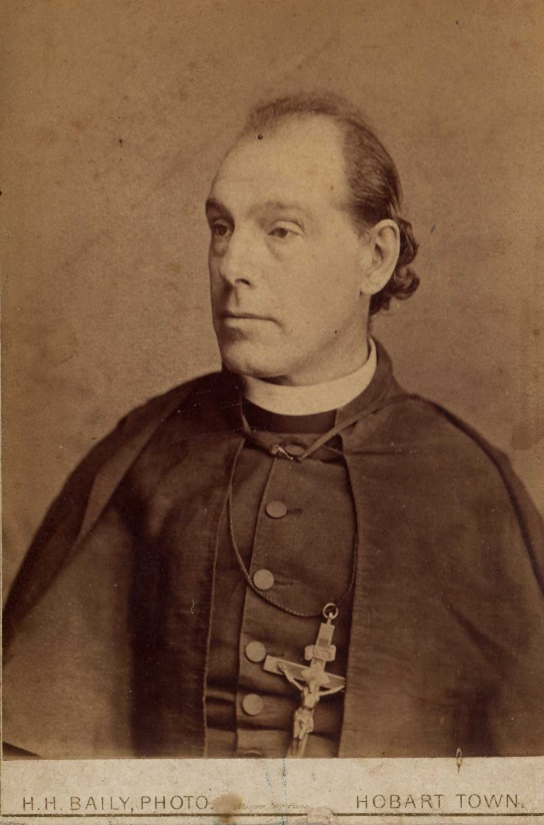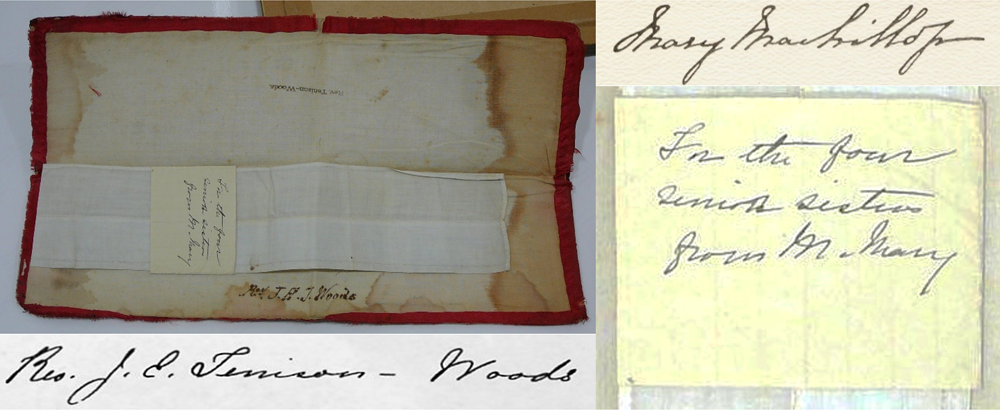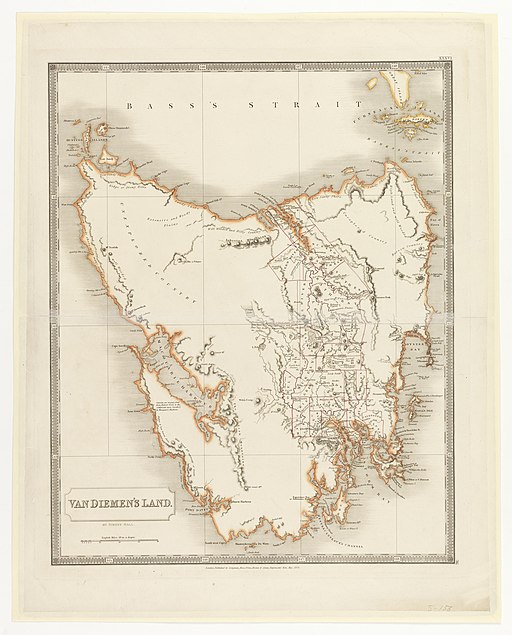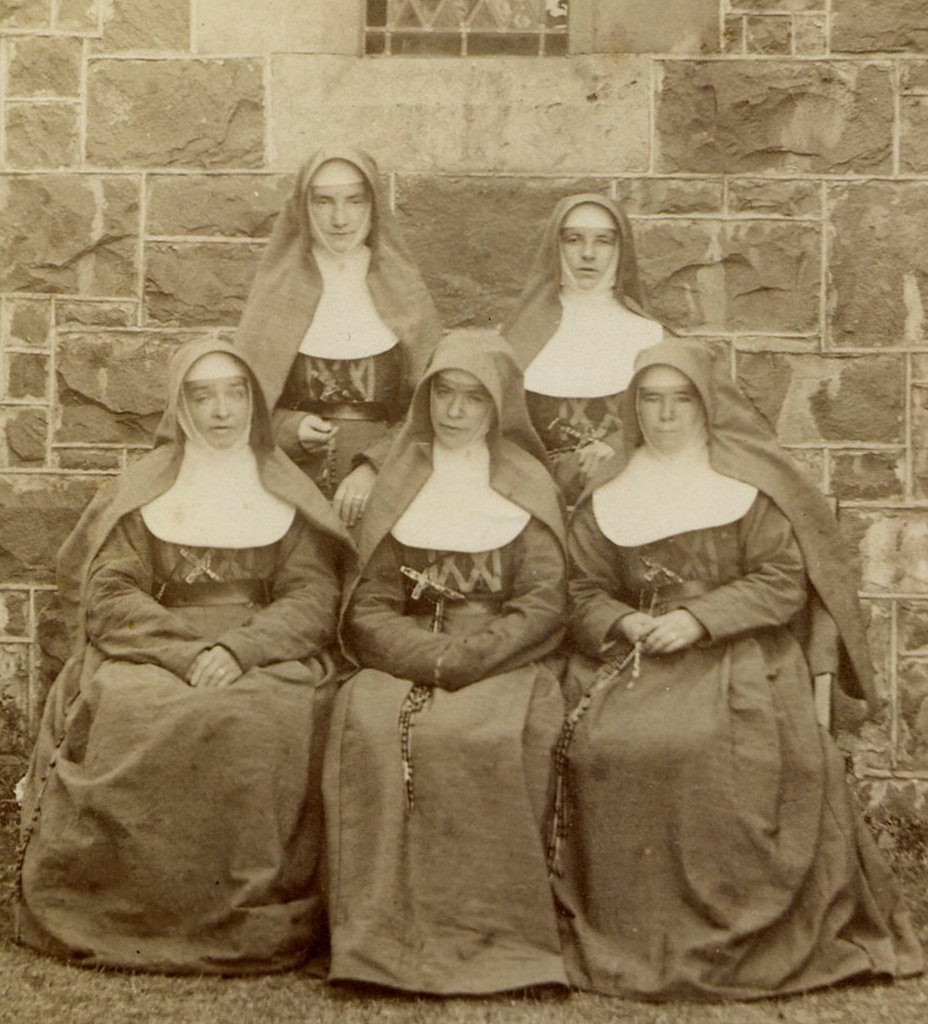
In education these days, there is a practice where a teacher may use a ‘provocation’. This is an object or artefact, a photo or a poem that is a stimulus for thought and discussion. A launching pad for learning.
In writing this reflection, and thinking about Father’s Day (4 September), and the role of Julian Tenison Woods as Father Founder of the Sisters of Saint Joseph, my mind was immediately drawn to an item we have in the display case in our Julian room at the Josephite Mission and History Centre in Hobart. It is Julian’s priestly collar in a battered case with a handwritten note from Mary MacKillop to the Tasmanian Sisters.
This gift to the sisters speaks volumes. The priestly collar is a powerful symbol of the myriad connections between Mary and Julian, forged through their shared faith. It is also a wonderful illustration of the style of their mission life.


It had been a stark introduction for him to the ‘new world’ when in 1855 (at the age of 22) he was introduced to his tasks of visiting the prisons and burying the prisoners. The harsh realities of the convict system under the oppression of the colonial years saw profound suffering and fallout from the previous 50 years of transportation.
Maybe Mary too was thinking of what lay ahead in Tasmania for the sisters in 1887 when she farewelled them from Sydney. It is interesting that in her note, Mary bequeaths this gift to the four senior sisters since there was a fifth sister in their group who was young in age, but also in experience. I believe Mary was acknowledging in this gift the years of service that the four senior Tasmanian founding sisters had given in the difficult Perthville years. This collar was given to the sisters after ‘the separation’ and in some ways was a precursor to Julian’s words in another letter to Sr Francis McCarthy; “but I think the time will come… when all St Joseph’s children will be brought back together again and be what they were in the beginning”.[2] A prophetic word that holds true today.

The cross and the nails we share;
His wounds are the prize I’ve won,
His thorns are the crown I’ll wear.
Though I to the world seem dead,
We live and will never part,
His Left Hand under my head
To draw me close to His Heart.
In conclusion, I would like to offer a prayer from our own Papa – Pope Francis, whose fatherly guidance is leading us through these uncertain times. This prayer found at the conclusion of his encyclical Laudato Si’ describes the challenges of our times but also the solutions.
In these words, I find there is the embodiment of all that Julian stood for and much of the prevailing Josephite spirit of our time. It speaks to Julian’s gentle nature, his humble trust in providence, his love for the poor. It speaks to his scientific mind that could encompass in awe and appreciation the whole scale of God’s creation from the wonders of the microscopic to the grandeur of geological time. All this knowledge serving to make him a passionate advocate for the environment, and a loving priest who respected the dignity of every individual who, in faith, he knew to be intimately connected to their earth and with their God.
A Prayer for our Earth
All-powerful God, you are present in the whole universe and in the smallest of your creatures. You embrace with your tenderness all that exists. Pour out upon us the power of your love, that we may protect life and beauty. Fill us with peace, that we may live as brothers and sisters, harming no one. O God of the poor, help us to rescue the abandoned and forgotten of this earth, so precious in your eyes. Bring healing to our lives, that we may protect the world and not prey on it, that we may sow beauty, not pollution and destruction. Touch the hearts of those who look only for gain at the expense of the poor and the earth. Teach us to discover the worth of each thing, to be filled with awe and contemplation, to recognise that we are profoundly united with every creature as we journey towards your infinite light. We thank you for being with us each day. Encourage us, we pray, in our struggle for justice, love and peace.
Prayer from Laudato Si’ encyclical by Pope Francis
Maria Fracalossi
Education Officer – Josephite Mission and Heritage Centre
Footnotes:
[1] Letter, J.E.T. Woods to F. McCarthy, August 1887, Tasmanian Sisters of Saint Joseph Archives.
[2] Ibid.
[3] In 1856, Van Diemen’s Land was renamed Tasmania; removing the unsavoury link the name Van Diemen’s Land had with its penal settlements (and the “demon” connotation). Tasmania was chosen as it honoured the explorer Abel Tasman, the first European to visit. Van Diemen’s Land (15202418751). Tasmanian Archive and Heritage Office Commons, No restrictions, via Wikimedia Commons.
[4] Foundation Leader Sr Francis McCarthy (middle, front row) and Sr Patrick Nolan (front row LHS) who was 60 years of age in 1887 when she left Perthville for her mission in Westbury.
